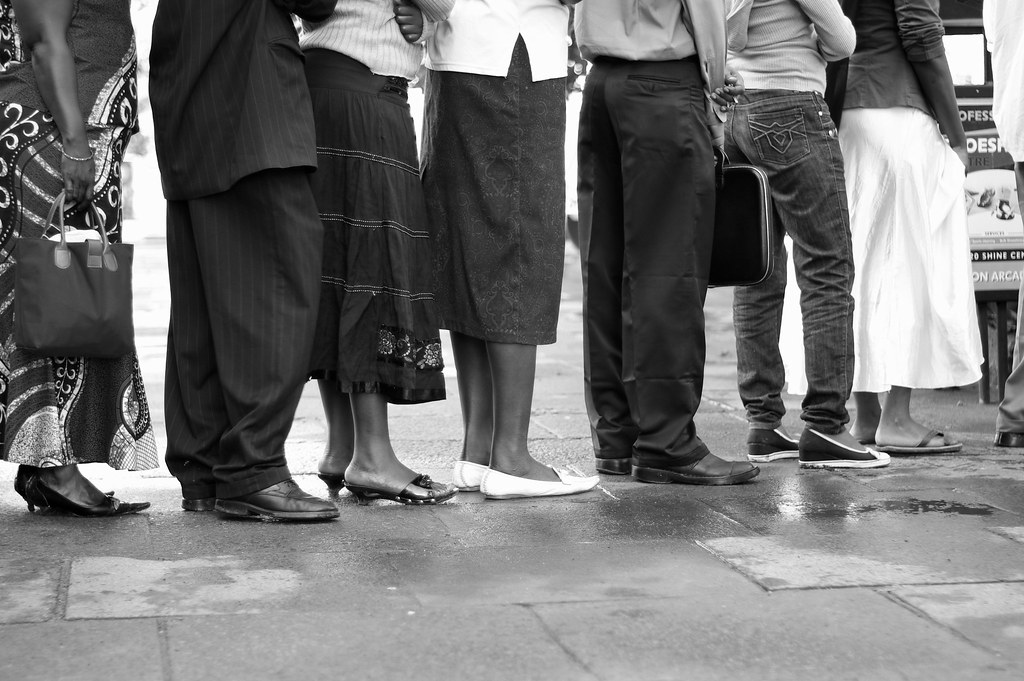Data indicate customers prefer to shop where they anticipate less wait time. What does this mean for companies trying to determine the revenue lost due to their long lines?
Researchers have long assumed the cost companies pay for their lines is based on the value of their customer’s time. But Subodha Kumar, Paul R. Anderson Distinguished Chair Professor of Statistics, Operations, and Data Science at the Fox School, argues this reasoning makes a simple, but a highly misleading assumption.
“How much I value my time is not the cost of waiting,” says Kumar. “Cost to the company is how much less will I buy from this company for every second of waiting.”
Kumar points out that the traditional assumption ignores an important factor in the customer’s purchasing decision: their perception of the line. The value of the customer’s time is relevant, but it is just one of many factors that influences this perception. The customer’s experience of waiting in line, interacting with employees, and using the product also matters.
For example, some health clinics choose to leave magazines in their waiting room. Magazines do not change how much customers value their time. However, if the magazine successfully entertains them, then they might choose not to penalize the company for the wait.
So, what does this mean for companies?
Kumar’s article, “The Value and Cost of the Customer’s Waiting Time,” suggests that simply measuring the value of their customer’s time is insufficient. Instead, Kumar recommends running experiments that directly measure how changes to the line influence sales. “It’s the best way to get in a customer’s head,” he says.
The Fox Editorial Team spoke to Kumar to shed greater light on his research, recently published in the journal, Manufacturing and Service Operations Management.
Who would benefit from running experiments?
Any company that has a line should consider the implications of these findings. Service sector industries that cannot predict how many customers they will have, such as restaurants, banks, hospitals or retail stores, could especially benefit.
How can companies run an experiment?
By changing different factors that shape the line, companies can evaluate the impact on their sales. To do this, start by tracking both the customers’ wait time and sales in a set period. Then, change one factor of the waiting period and compare sales across the two periods. Kumar created a very simple and user-friendly algorithm that can help companies make these calculations (see Equation 5 on page 1541).
It is important that companies rely on their own experiments because the implications of a line can vary based on the industry. In an emergency room, a long line can be the difference between a customer living and dying. In a restaurant, the worst that can happen is that customers get hungry while waiting to be seated.
Which factors of a line can be changed?
There are a number of factors to consider when changing a line.
1. Number of employees
Companies can easily vary how many employees are working. Hiring more employees is one way that companies can shorten their lines.
Additional employees can also help enhance the wait experience without reducing wait time. For example, an employee could be hired to answer questions from people in line and estimate their wait time. Customers who have a tight schedule may appreciate knowing precisely how long the line will be.
2. Novice vs. experienced employees
In some industries, customers find it more important to have experienced employees. In a bank, where people are handling their finances, they may prefer to wait longer for a more experienced employee. In this case, the company might benefit from hiring fewer but more experienced employees at a higher wage, lengthening their line in the process.
In other industries, such as a grocery store, the repercussions of inexperienced service are not long-lasting. In this case, it might be worth it for the store to hire more employees with less experience in order to reduce their lines.
3. Line activities
One reason customers avoid lines is that they are boring. If the company can provide entertainment such as magazines, free Wi-Fi or comfortable chairs, then waiting may no longer feel like a burden.
Consider choosing entertainment forms that match the industry. A restaurant might consider providing customers in line with snacks so they can temper their hunger. A barbershop might provide a photo book of different haircuts they offer.
Even small changes can go a long way. In one hallmark case among queuing theorists, a building manager installed floor-to-ceiling mirrors in his high-rise Manhattan office building so that people waiting for elevators could look at themselves while waiting. Complaints about the wait time dropped to nearly zero.
4. Technology
With new technology comes new forms of lines. Some companies ask for their customer’s phone numbers and provide text alerts or automated callbacks. This enables customers to leave the store and do other activities while waiting. Other companies, such as airlines, allow customers to sign in before they have arrived.
Customer demographics and the surrounding environment influence the effectiveness of these strategies. Older customers may not understand how to use the technology and be less willing to try it out. In areas with cold weather or few surrounding stores, walking around outside may not be an appealing option.
Conclusion
Customers do not always value their time in terms of dollars and cents. Just like anybody else, they are prone to making decisions based on the whims of everyday perceptions and experiences.
Studying how much customers value their time matters. However, until companies measure exactly how the structure of their line impacts sales, there is no guarantee that they are making best use of their resources.




